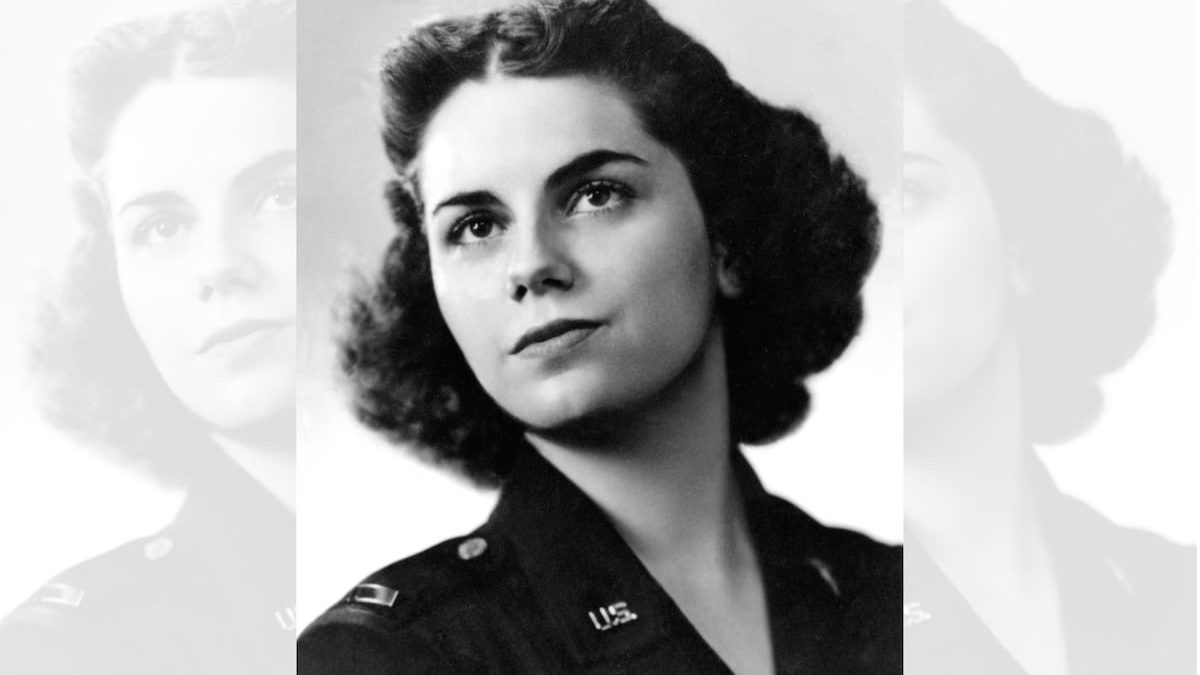Before the Second World War, there was little need nor interest in evacuating wounded military personnel to rear areas via aircraft. As the war turned global, however, the pressing need for the creation of medical air evacuation squadrons within the U.S. Army Air Forces became clear.
According to the Air Force, a rushed training program for flight surgeons, enlisted medical technicians and flight nurses cropped up at Bowman Field, near Louisville, Kentucky.
The all-volunteer force had to train for crash procedures, survival training and the effects of high altitude on patients with various wounds. Since the aircraft also transported military supplies, the obvious markings of the Red Cross were not permitted, making the medical personnel particularly vulnerable to enemy attack.
Among such volunteers was 1st Lt. Mary Louise Hawkins, who spent 13 months flying the wounded out of the Pacific Theater, becoming one of the few women to be awarded the Distinguished Flying Cross during WWII.
On Sept. 24, 1944, while en route to Guadalcanal from the fighting in Palau, the C-47 transporting Hawkins and 24 wounded Marines began to run low on fuel.
Forced to crash on Bellona Island, which had not yet been cleared of enemy forces, the resulting landing left all relatively unscathed — all except one.
During the landing, one of the C-47’s propellers ripped through the plane’s fuselage and severed the trachea of an already wounded Marine.
As the Marine asphyxiated in his own blood, the rattled Hawkins moved quickly. Searching desperately for a means of suction and with only precious seconds to spare, the nurse ripped open part of her “Mae West” life preserver and pulled out the inflation tube from the vest.
Inserting the tube in the Marine’s neck, Hawkins manually sucked the blood out the patient’s neck, spitting mouthfuls on the floor of the C-47. The jerry-rigged suction tube worked, allowing for the Marine to breathe while the group waited over 19 hours for rescue.
For her actions, Hawkins was awarded the Distinguished Flying Cross.
“First Lieutenant Hawkins displayed unusual courage in rendering prompt and efficient first-aid treatment to an injured passenger immediately after the accident,” her citation reads. “First Lieutenant Hawkins’ immediate performance of technically difficult acts despite the stress incident to the crash landing of the airplane is an example of steadfast courage which reflects great credit on herself and the Army Nurse Corps.”
Thanks to Hawkins, all 24 men survived the harrowing ordeal.
Claire Barrett is the Strategic Operations Editor for Sightline Media and a World War II researcher with an unparalleled affinity for Sir Winston Churchill and Michigan football.
Read the full article here


